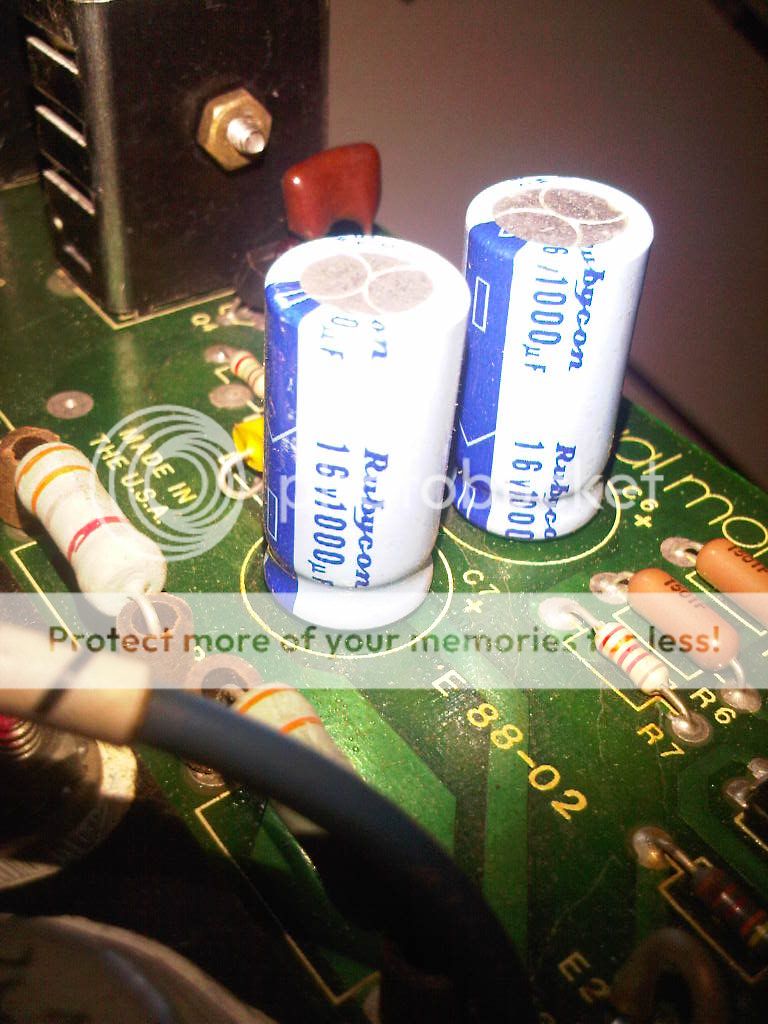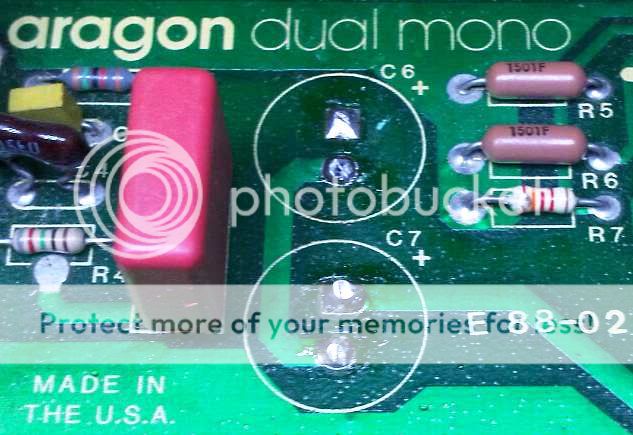Just a quick one here... I remember that there is a method one can use to use two polarized caps in such a way that they behave as a single non-polar cap. Apparently this was used in some loudspeakers to make a "large", inexpensive non-polar cap.
What a cannot remember is the the method itself. It involved wiring the caps with either the positives together or the neagatives as below:
Can anyone help jog my memory?
What a cannot remember is the the method itself. It involved wiring the caps with either the positives together or the neagatives as below:
Code:
-)|--|(-
++
or
-|(--)|-
+ +Can anyone help jog my memory?
You can do it either way. Remember that that putting caps in series halves the overall capacitance though, so two 1000uF caps connected as above will give you the equivalent of 500uF.
Think of it this way:
Two series caps in a crcuit actually form a loop consisting of the two caps, some generating source voltage and a load (impedance).
It doesn't take much reference to Tevanin and Ohms to understand that in such a loop the components (4 of them!) can be connected in any order to achieve the same effect.
THUS, the two caps can be + to + or - to - and the circuit will not know the difference.
No magic. 😀
Two series caps in a crcuit actually form a loop consisting of the two caps, some generating source voltage and a load (impedance).
It doesn't take much reference to Tevanin and Ohms to understand that in such a loop the components (4 of them!) can be connected in any order to achieve the same effect.
THUS, the two caps can be + to + or - to - and the circuit will not know the difference.
No magic. 😀
Thank you both indeed. It was one of those things that I picked up once and never thought about it again.
of course in audio applications it is measurably better to use an actual bi-polar capacitor - fabricated with "full strength" oxide dielectric layers on both foils
True. But in this case, I am "borrowing" a design I've seen in some Infinity speakers to get better LF extension from a less-than-optimal enclosure (Cetec/Gauss 2841 driver in a 60l sealed enclosure). I had to find a way to get a roughly 2200uFd/60V bi-polar. In this instance, I had two 4700uFd/71V electrolytics to get a single 2350uFd cap.
In any event, it worked out splendidly.
In any event, it worked out splendidly.
There's also an old technique where you put the two caps in series, and connect a diode across each one, I believe the diodes are wired so that the cathodes go to the + sides of the caps. The idea is that on each half of the cycle a diode shorts out 1 cap, giving you a bipolar cap that's the same value as one of the series caps instead of half that value.
I've never tried it, so I'm not sure how well it works, I would think there'd be some non-linearity at low signal levels though.
I've never tried it, so I'm not sure how well it works, I would think there'd be some non-linearity at low signal levels though.
digging old thread, I just find the same method found in Aragon2004. Is this method good in term of sound quality compared to using NP caps? What about to use BP caps such as Nichicon Muse BP?






- Status
- Not open for further replies.
- Home
- Design & Build
- Parts
- Polarized to non-polar capacitor wiring